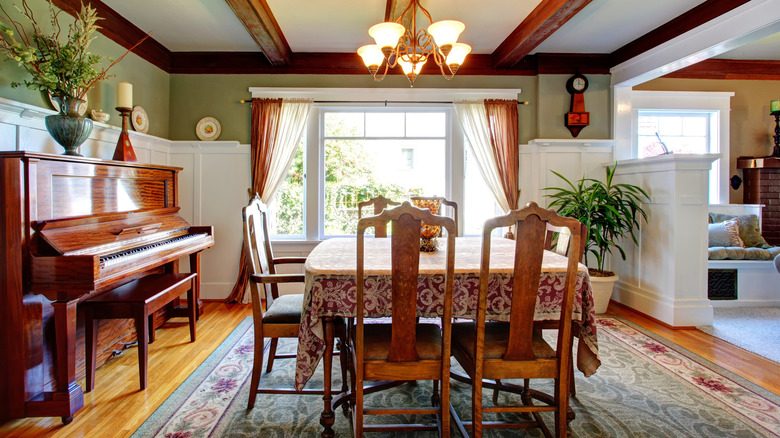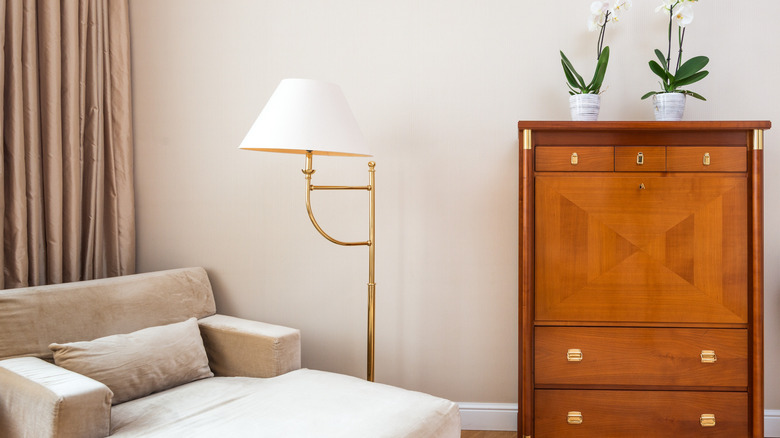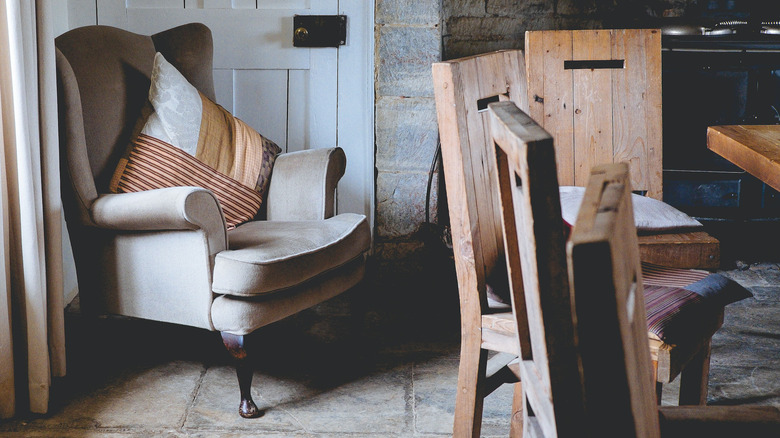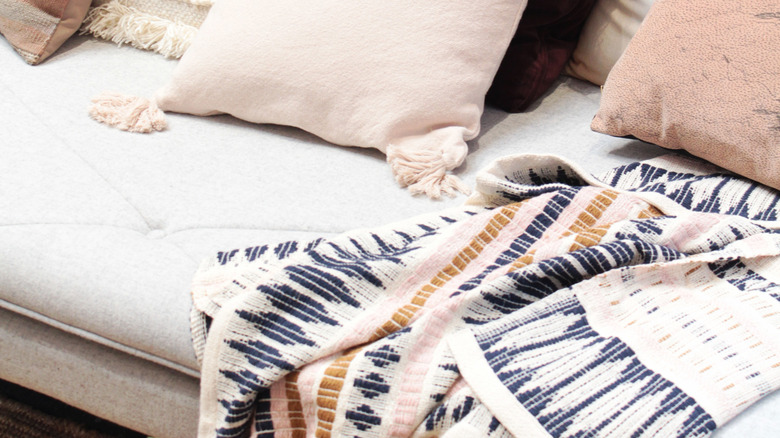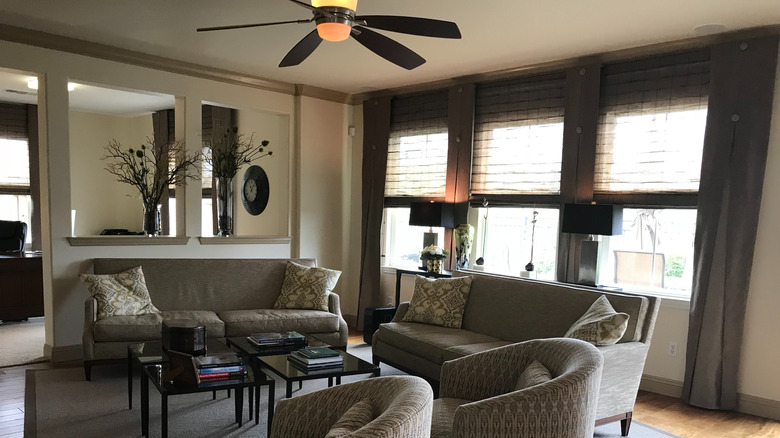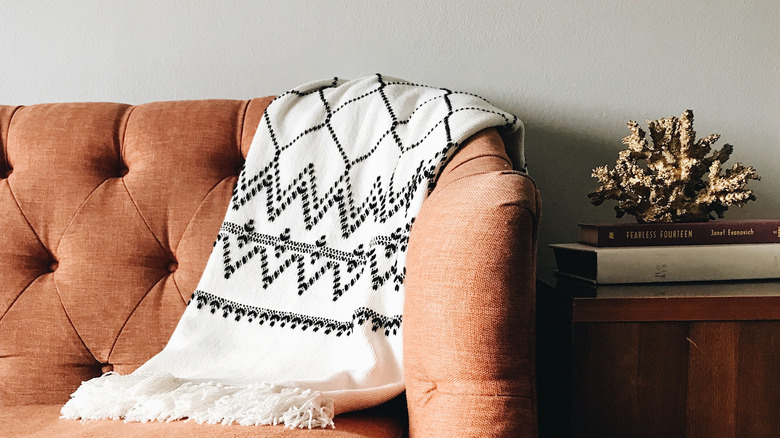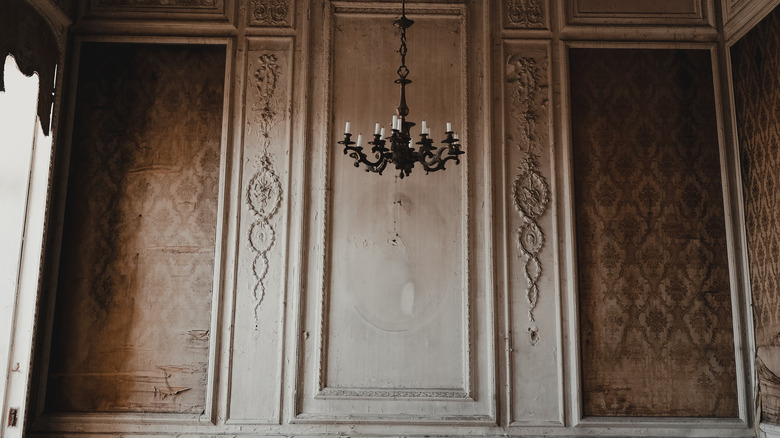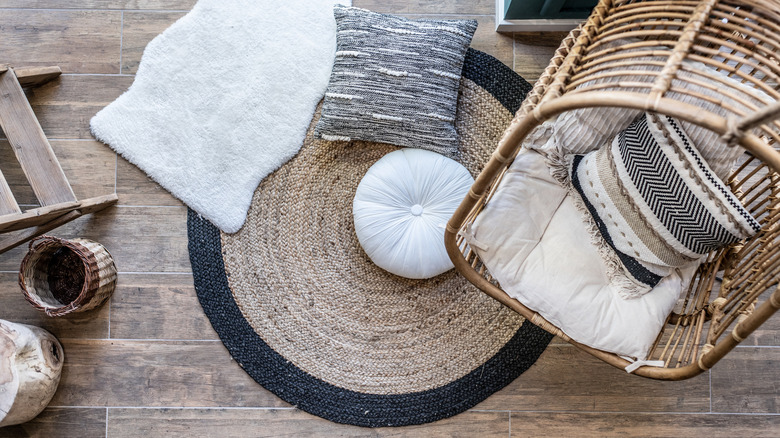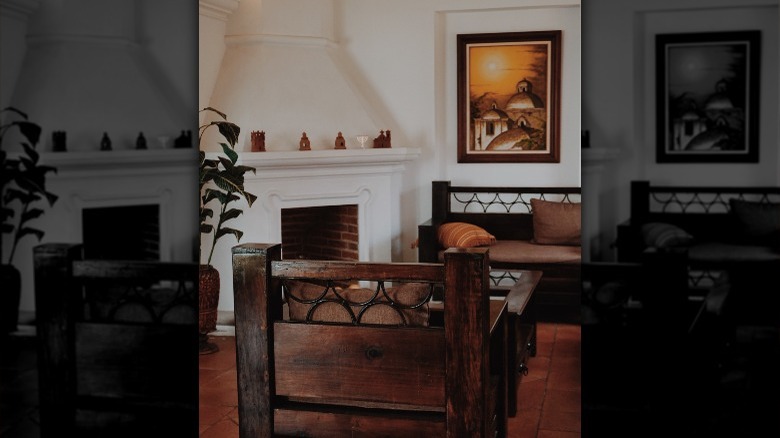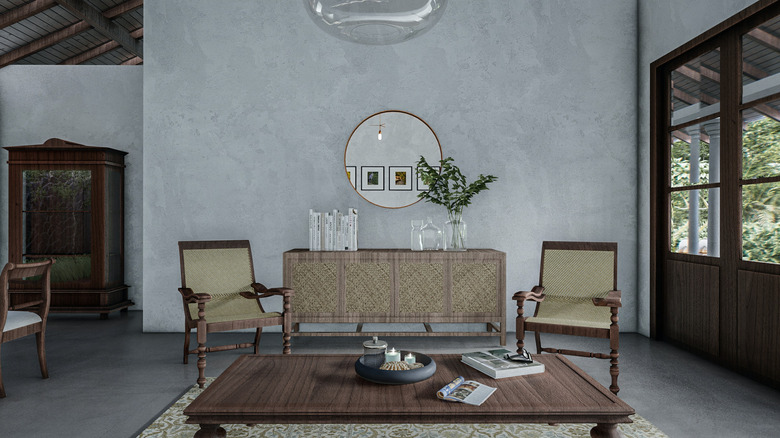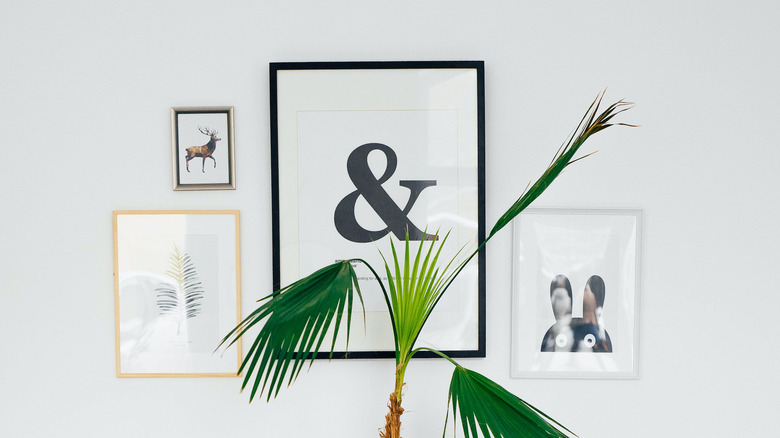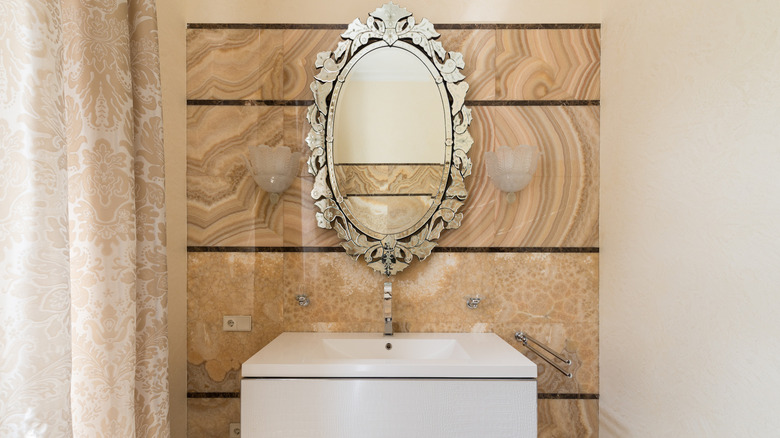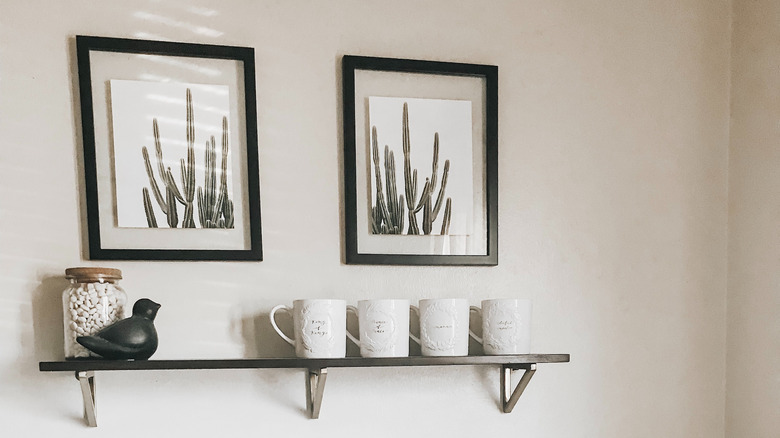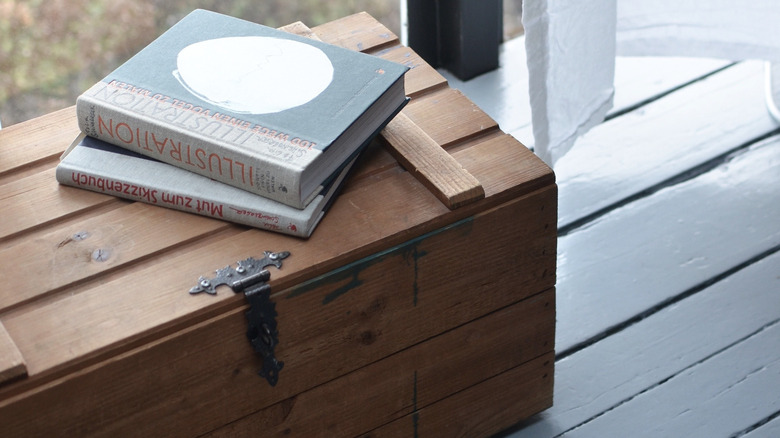The Ultimate Guide To Colonial Decor
Colonial style decor began as an ancestral-influenced, rustic, hand-crafted design scheme, as it dates back to the times of early American settlers. They were heavily inspired by their European ancestors. These American settlers decorated their new homes with man-made furniture, flora and fauna wallpapers, and hand-sewn quilts in patched patterns, as per Better Homes and Gardens. Most of the decor items in these style homes reflected what the people found in their surroundings. These materials included wood, brick, stone, and other natural elements. Using the materials they could find, they built homes influenced by the places they left, encompassing a few styles such as Georgian, Federalist, Dutch Colonial, Spanish Colonial, and more.
Colonial-style homes are typically symmetrical in their exterior designs. These types of dwellings often have square or rectangular windows, low ceilings, and a simple layout. Separate rooms are common in the interior as opposed to the open layouts we see in modern houses. However, there are plenty of ways to incorporate colonial-style decor into any past, present, or future home. One could consider the style of furniture, type of flooring, color palette, and scaled-down aesthetic as starting points to achieving the ultimate colonial-style decor in your home.
Choose soft and muted colors
Simple colors were common in most dwellings during colonial times. MyMove notes it was not uncommon for someone to opt for softer tones and white walls in their home and keep bold colors to a minimum. In decorating a home today, one could consider pale peaches, muted greens, soft pinks, pastel yellows, light blues, and different brown hues as some possible color options. These soft colors were standard on walls during the time period but were also found in the fabrics and accessories. Introduce subdued color into your home in big and small ways for a stunning aesthetic.
Adhere to the muted color palette, whether you are creating an accent wall, adding a patterned rug, or choosing a statue for a tabletop. To pick the perfect colors for your space, try to find your favorite neutral tones in the lightest shades possible. This method of choosing keeps the color in the same family of shades but mutes the depth. Colonial-era decor pieces often replicated natural elements and complexions, so endeavor to maintain simplicity and prevent oversaturating the environment with deep, dark shades.
Add craftsman traditional furniture
The rustic furniture preferred by early American settlers led to a period that emphasized heavily traditional wooden furniture, as per Impressive Interior Design. Because the wood was so plentiful, it was often utilized to build commonly used home furnishings. These pieces were crafted from pine, birch, or maple woods. Carpenters often used wood to make cabinets, farmhouse tables, stools, and spindle back chairs. Once rooted in colonial decor history, some of these wooden creations are mainstream in today's decor designs.
To introduce a bit of colonial-inspired furniture in your home, try to find simpler furniture pieces commonly made from pine or birch woods. For a more ornate look, consider items crafted out of higher quality material such as walnut, oak, maple, or cherry wood. (via MyMove). Adding a well-crafted, thrifted, or new sofa table, end table, coffee table, chair, bench, stool, or sideboard is a fanciful way to invoke colonial charm in your home. Do your best to source items that emphasize craftsmanship and focus on simplicity.
Decorate with elements of natural texture
Decorating homes in natural elements were popular during the height of Colonial decor, as people often used what they could find as decoration. Some of these materials typically included rattan, wicker, reed, and sisal. According to Houzz, these lighter shades were ideal for creating contrasts against the darker furniture items. If you are looking to add some details to your space, try sourcing pieces made with natural fibers such as jute and wool in woven textures.
Incorporate these natural materials vicariously throughout your home in small decor additions to increase depth in a room and reminisce of colonial simplicity. Include items like accent rugs in the living room or foyer, and blankets layered on the couch or in baskets in the room's corners. Considering these elements for your colonial-style decor adds a gentle warmth to the environment and highlights some much-needed visual texture. These accents were used by generations, and are still used in furniture and fabrics crafted today.
Ceiling fans are for more than a cool room
Most colonial homes did not have the technological advances and luxuries most people have today, making household fans a necessity to keep a room cool. People typically used ceiling fans to circulate air in a space, but they also doubled as decoration, as per SFGate. In today's homes, consider adding a ceiling fan to your living room or bedroom, but try not to gloss over the style possibilities. Before finding the right color or material for the fan, measure what size will work best in your given area.
The size of the fan should be appropriate for the room it is going in. A too big fan will overpower a space, while one that is too little could have minimal impact on function and design. While seemingly a dated feature, ceiling fans are far from being out of style. Most modern home buyers add them if they are not already in the home (via HomeLight).
Layer in quilts and blankets for a soft touch
Handcrafted quilts and blankets were desirable in colonial times as winters were harsh, and these items were necessary for providing warmth. SFGate reports that homes were often layered in plush patchwork quilts, lightweight cotton fabrics, and wool blankets. They were layered in living rooms and kept the spaces feeling homey. Besides fulfilling a need, quilts and blankets also highlighted the color scheme in the room. They were colored with natural dyes and were often made in varying shades of white, off-white, and a third color, like red or blue.
Replicate the style in your living room by sourcing blankets and stitched quilts that match your color palette or add a new shade to your space. Consider adding an accent color for added contrast since blankets are perfect for introducing a subtle change. Remember to keep the pattern simple and highlight the material to invoke that colonial charm. These coverings are the perfect transitional decor item to keep your style fresh and seasonally updated, so style a few or swap them out throughout the year.
Update the space with toile wallpaper
One way to create a timeless colonial-inspired look in your house is by incorporating wallpaper. But not any wallpaper will do. According to Better Homes and Gardens, a popular 17th-century design was the toile de Jouy, simply known today as toile. It typically depicts pastoral scenes throughout its pattern, featuring trees, flowers, animals, and cottages. Add a bit of French flair and drama to your space by layering the walls with a toile pattern in a color scheme fit to your liking. Though the colonial style is about understated elegance, the toile wallpaper can add drama to a space (via Overstock).
Wallpaper is still popular today but is incorporated in new ways. If you want to create a classy statement with colonial inspired prints but can't commit to covering an entire room or wall, try a smaller area first. Decorators are finding unique approaches to incorporate wallpaper into spaces, like adding prints to the backs of bookcases or fronts of furniture. You could even consider covering smaller portions of a wall with wallpaper combined with millwork, as seen in the image above.
Combine wood floors and area rugs
When optimizing the colonial look in your home, avoid wall-to-wall carpeting and opt for wooden floors instead. As per HomeTips, combine wide planks with area rugs for a 17th-century aesthetic. When shopping for the perfect accent rug for your home, consider braided rugs made from natural materials or low-profile carpets with whimsical patterns. Shag rugs were not popular yet, so you should stick to short-pile and flat-woven pieces with vintage inspiration. Many of the colonial designs contained floral or simpler geometric prints.
By choosing to layer a rug on top of hardwood flooring, you create a segmented room and add structure to the space. If the area lacks dimension, try a twist on the colonial aesthetic and create a layered look by adding a soft plush rug on top of a braided carpet, as seen in the image above. The layers formed in this look blend contemporary and colonial styles. The adjustment in symmetry will create visual interest in the space and add composition. Think about the other major elements in the room and contemplate which shape is best –- oval shape or rectangular style. Once you have decided on the size and shape, consider the color. The colonial aesthetic is adaptable, but the key is to focus on simplicity and neutralism.
Create a focal point in the living room with a fireplace
Many colonial homes were built with items sourced locally from the environment, making solid wood beams a common trend in colonial home building. These exposed wood beams were often found in bedrooms and living rooms of colonial homes, and are a common feature found in Spanish Colonial Revival architecture per The Spruce. Creating this look in your home does not have to be extensive, as DIY options have a similar effect. To invoke the rustic elegance of heavy wood beams, stick to the basics and combine three wood planks in a U-shape to create the illusion.
To add some of these classic elements to your space without a construction overhaul, try adding some simple architectural features. One could try creating a statement piece like the arches over the fireplace in the picture above. Strive to keep the forms simple and understated but naturally authentic.
Maintain a scaled down aesthetic
Since color choices were limited, walls not covered in wallpaper were typically painted in white or cream shades. Colonial decor emphasizes simplicity, so neutral wall colors are a must. Browns, creams and beiges are ideal for creating an authentic yet contemporary aesthetic, as per Housedit. Neutral colors never go out of style and can easily mesh with a variety of shades.
Whitewashed colors and muted hues have stayed popular throughout the centuries, making pale grieges and off-white tones popular warm neutrals today. These tones blend naturally with delicate fabrics and wood accents common to the colonial era. But even though they're easy to decorate with, you also don't want to over-stuff the room with furniture. You want to maintain a scaled-down aesthetic that engulfs calmness for a successful colonial look. Too many colors, vibrant shades, and complicated patterns can create chaos in what should be a rather simple space.
Accessorize the space using motifs
When decorating your home in colonial style, note that decor of this time should not be confused with items from the time period of the American Revolution. According to Restoration Fabrics and Trims, American flag symbols are not a part of colonial decor, although the colors may be used in fabrics. To truly complete the ultimate colonial look in your home, try to instead decorate with motifs and materials authentic to the time period.
These items could be simple designs such as striped, checkered, or plaid weavings often found in blankets and tapestries. You may also opt for simpler patterns found in nature such as birds and flowers on pillows and quilts. Some choose to decorate with these symbols and other common ones, including pineapples, weeping willows, and hearts. These symbols were very customary in colonial times as they symbolized common themes such as longevity, love, and hope. Amplify charisma and the colonial aesthetic in your space by sourcing items that have these motifs embroidered or stamped on them.
Mirrors paired with sconces
Mirrors can be a handy wall accessory, as they reflect and create beauty in a space. According to the Vestabul School of Design, most mirrors of this era were typically surrounded by intricate carvings and designs, such as scrolls and rosettes, which were perfect for introducing a dreamy and romantic aesthetic to the space. This mirror style is finding its footing in interiors today, as the antique look blends well in contemporary confinements.
For the ultimate colonial look, one could consider pairing the elegant mirror with a wall sconce or two on either side or above. During colonial and postcolonial times, most mirrors often had sconces attached to them to magnify light (via The Hunt Magazine). What was once a much-needed light source is now an excellent vintage decor element to add to your space. As all decor evolves over time, lighting is no exception. If hardwired wall sconces are not an option, consider a renter friendly solution and opt for a battery operated or remote controlled light source.
Incorporate naturally influenced art
Using whatever skills they had, colonial people often crafted primitive home decor items that have thrived for years in homes over the centuries. To achieve the ultimate colonial aesthetic in your home, try incorporating nature-influenced art into the space. Interior Design Info notes that the study of botany was interesting during the time, making botanical art popular.
People often kept their artwork simple and minimal. To invoke colonial charm in your home today, accent your space in art depicting vibrant tropical plants, botanical drawings of wildflowers, and animal printed artwork such as stenciled birds and butterflies. For a successful colonial art wall, try to create a grid of nature silhouettes or form a collage of prints that reference nature and animals common to the time period. Keep the colors subtle and the drawings simple, as colonial decor is subtle and uncomplicated.
Incorporate antiques among the decor elements
Interiors of many colonial homes were often layered in travel-influenced pieces such as trunks and soft furnishings. Colonial decor consisted of eclectic accessories that people usually collected from their journeys and trips. Consider adding some antique items to fill your space that look like they belong in a past life but also nod to who you are. According to Kate Walker Design, these could be pieces like fine china, crystal, silver globes, maps, and telescopes.
Since people did not own as many items as we do today, they incorporated generations of antiques into their decor schemes. Sometimes the best way to decorate is to source pieces that look like they may have come from that time period and bring out the nostalgia in you. For a contemporary twist and more personal touch, one could consider highlighting a favorite road trip or vacation by framing a map of the journey or favorite photo. The colonial aesthetic is flexible, but the key to a successful look is to focus on simplicity and viability, as homes of this time were simpler and more practical.
